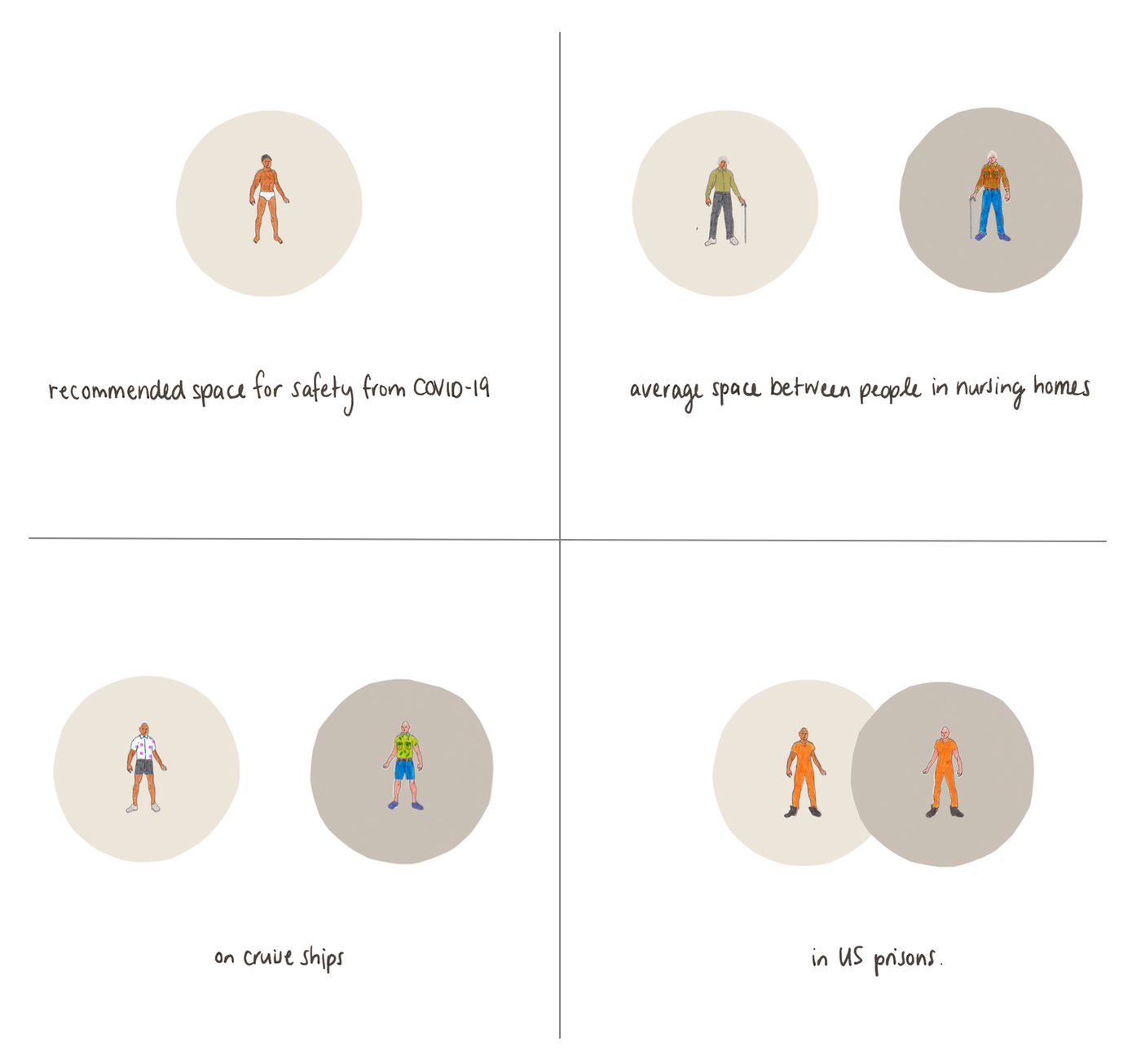Since you asked: Is social distancing possible behind bars?
The short answer is no - social distancing is even harder behind bars than in nursing homes or on cruise ships.
by Aleks Kajstura and Jenny Landon, April 3, 2020
Jails and prisons are often overcrowded, and their residents are disproportionately likely to have chronic health conditions that make them especially vulnerable to viral infections. So as the COVID-19 pandemic unfolds, we’ve been asked: Is social distancing (as recommended by the CDC and other public health agencies) even possible behind bars? Can incarcerated people maintain 6 feet from each other, and from correctional officers and other staff?
In short, the answer is no.
To answer this question, we looked at how the physical space of jails and prisons compare to that of cruise ships and nursing homes, two of the most prominent incubators of the virus.

The Grand Princess and Diamond Princess, two cruise ships implicated in the outbreak of COVID-19 in the United States, have typical cabins that range from 73 to 79 square feet per person (with furnishings like beds, dressers, chairs, desks, and tables).
And generally, any shared bedroom in a nursing home is required to have 80 square feet of space per resident (including necessary furnishings, like a bed, dresser, table, and chair).
We found that incarcerated people are living in quarters that are similarly sized, if not smaller. According to the American Correctional Association (ACA), cells in correctional facilities should have at least 25 feet of space per person in each cell that are “unencumbered,” meaning they are not taken up by the bunk, desk, or other furnishings.
That’s a 5X5-foot space for each person, leaving almost no room for maneuvering while maintaining the recommended 6 feet of distance between people. And we know that in some facilities, beds can be as close as 3 feet apart.
COVID-19 is hammering cruise ships and nursing homes because social distancing is impossible. Incarcerated people are living in comparable if not smaller quarters, but with a notable difference: On cruises and in nursing homes, people have in-room access to the necessary hygiene products and water – something that is often missing in correctional facilities.
We’re already seeing the appalling result in city and county jails nationwide, most notably on Rikers Island in New York City, where the coronavirus infection rate is already nearly 8 times higher than the rest of the city.
Incarcerated people are disproportionately affected by underlying health conditions known to exacerbate COVID-19, and social distancing is impossible. There is no time to waste: State and local governments must take swift action to reduce prison and jail populations.
For our virus response tracking and other jurisdiction-specific information, see our virus response pages.



